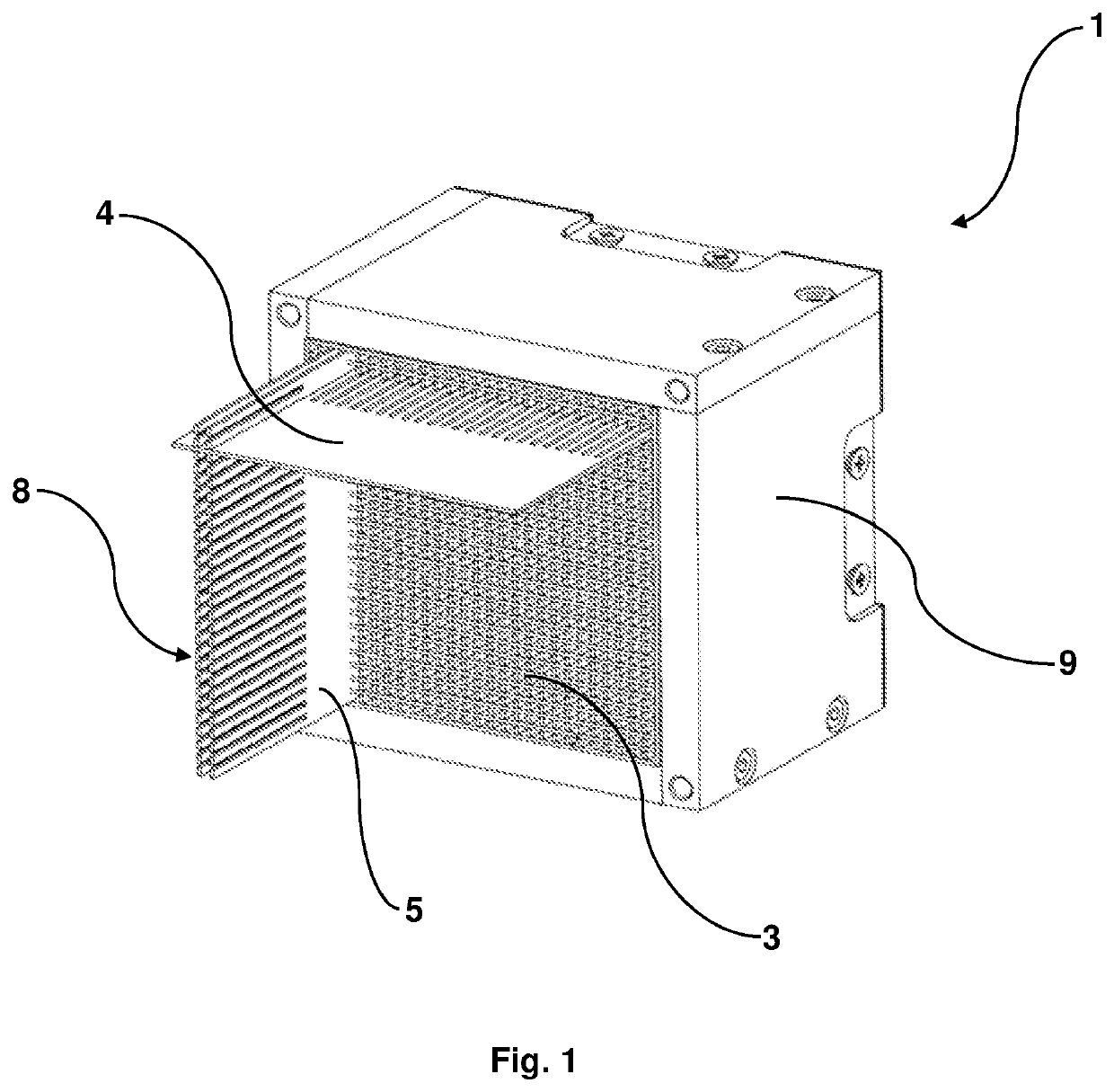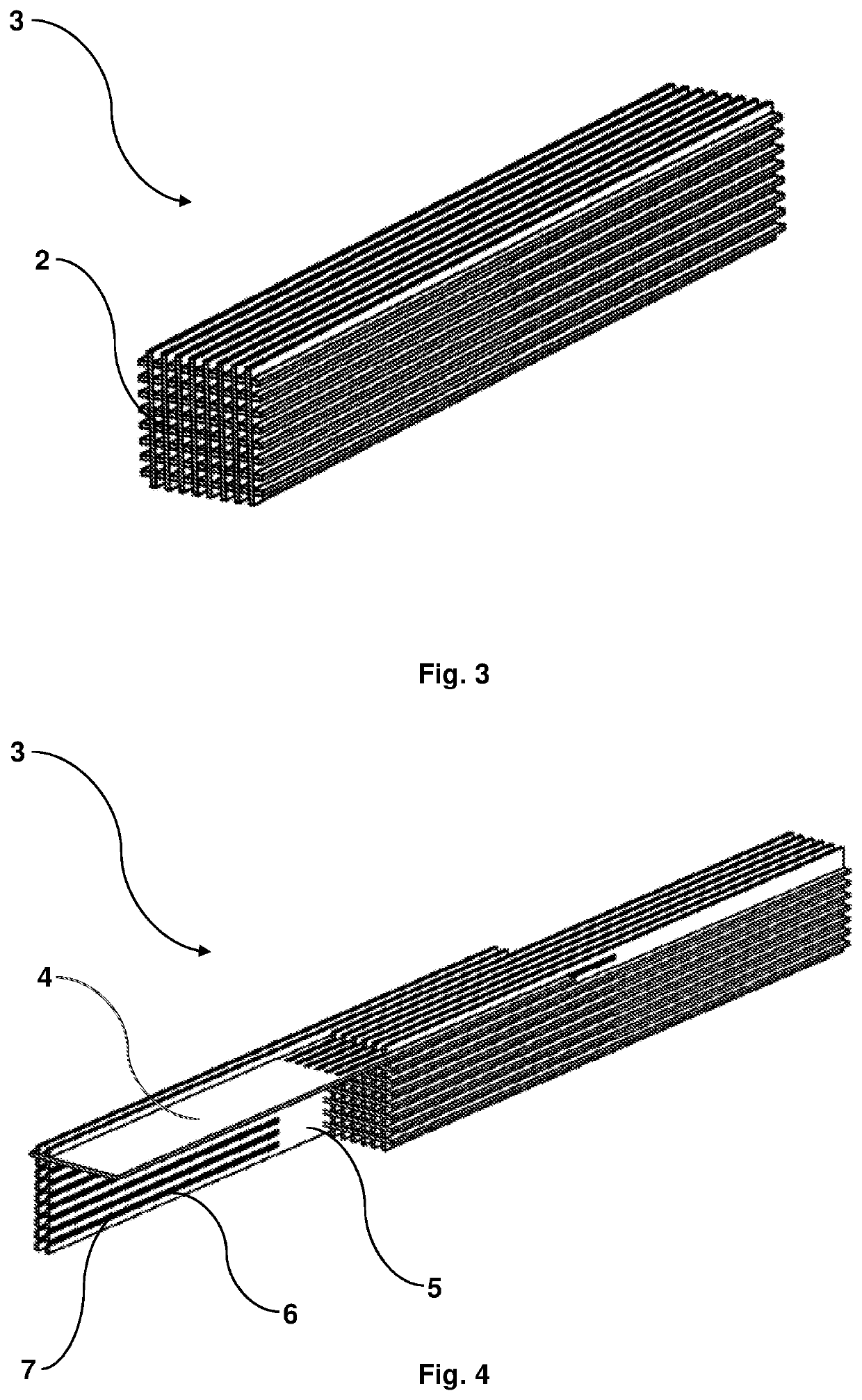Calorimetric detector for measuring the energy of electrons and photons
a detector and electron and photon technology, applied in the field of scintillator materials in nuclear or high energy physics, can solve the problems of no longer being used types, more and more restrictions are applied to the design of calorimeters, etc., and achieve the effect of high density
- Summary
- Abstract
- Description
- Claims
- Application Information
AI Technical Summary
Benefits of technology
Problems solved by technology
Method used
Image
Examples
Embodiment Construction
[0024]This invention proposes a calorimetric detector 1 comprising pure tungsten matrix 3 combined with single crystal fibers as scintillating fibers 2, where the scintillating fibers 2 were used to collect and transport the light. The nature of the design was flexible and it was optimized in accordance with the type of particle and shower which needed to be detected.
[0025]The shower length of the particles was estimated via simulation and it was described mainly by two parameters, as Moliere radius and the radiation length X0 are. A measurement of the transverse size, integrated over the full shower depth was given by the Molire radius (RM) which was approximated by RM(g / cm2) by the following equation:
RM(gcm2)≅21 MeVX0∈(MeV).
[0026]The shower shape was given by the following graph:
[0027]The electromagnetic showers, e.g., their longitudinal and lateral sizes are described in terms of the radiation length X0, which depends on the characteristics of the material:
X0(gcm2)≅716 g...
PUM
 Login to View More
Login to View More Abstract
Description
Claims
Application Information
 Login to View More
Login to View More - R&D
- Intellectual Property
- Life Sciences
- Materials
- Tech Scout
- Unparalleled Data Quality
- Higher Quality Content
- 60% Fewer Hallucinations
Browse by: Latest US Patents, China's latest patents, Technical Efficacy Thesaurus, Application Domain, Technology Topic, Popular Technical Reports.
© 2025 PatSnap. All rights reserved.Legal|Privacy policy|Modern Slavery Act Transparency Statement|Sitemap|About US| Contact US: help@patsnap.com



